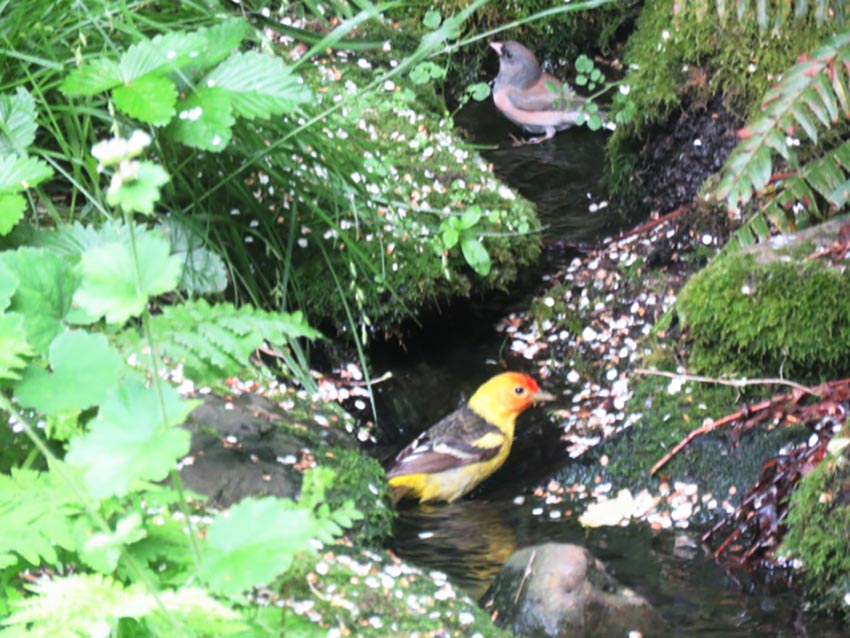
25 May Spring in Yakima County and around the state
Posted from seattle, WA on May 24, 2023
It’s Delia’s 73rd and my 72nd May. May is by far the biggest month on the calendar if you love Birds, as many come up from the South-lands to breed here in the temperate zone. In past Mays there were no doubt more birds around, but there has never been a May where we appreciated the ones that were around more.

May is the best time for scenes like this. It’s at Butyl Creek, our backyard recirculating creek in Seattle. A migrating Western Tanager is bathing just downstream from a permanent-resident Dark-eyed Junco. This was yesterday, when we also had about 5 Yellow Warblers, Wilson’s Warblers, a female MacGillivray’s Warbler and permanent resident Downy Woodpecker, among others, bathing at the creek.

This Calliope Hummingbird was on territory on Clemon Mountain, just north of Yakima, WA. This is the smallest US Hummer, but it packs a big visual punch..

Yellow-breasted Chats never get the publicity they deserve. This bird was singing at Wenas Creek last Saturday. This bird takes its singing seriously and does a lot of singing. Kind of like certain jazz musicians, a Chat can sing an unexpected line of notes that suddenly makes you burst out laughing. Nobody would believe you if you painted one with it’s throat feathers puffed out like that.
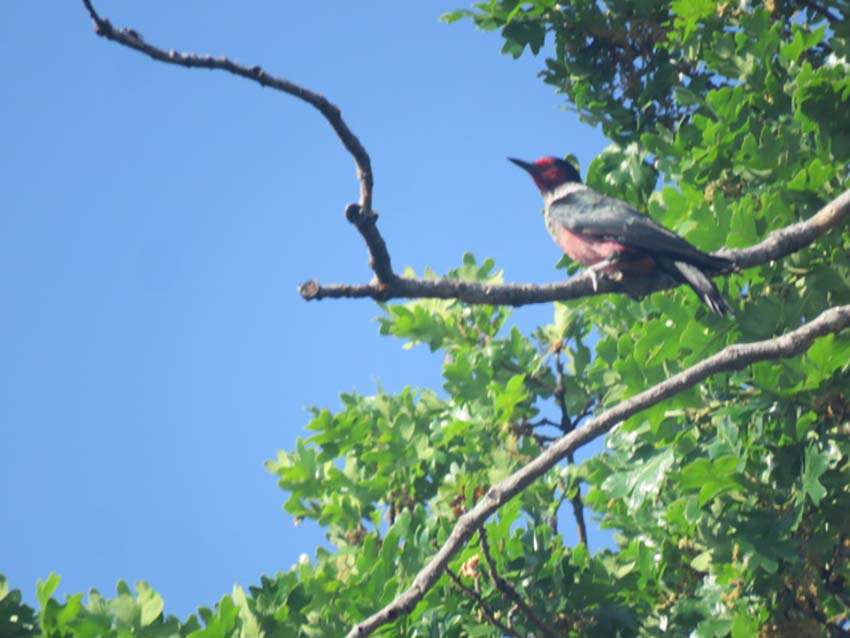
This Lewis’s Woodpecker was at Fort Simco, east of Yakima, a few days ago. This Woodpecker mostly does aerial hunting of insects, like a Woodpecker becoming a Swallow. We were pleased to see them in several locations on the Eastern slope around Yakima.
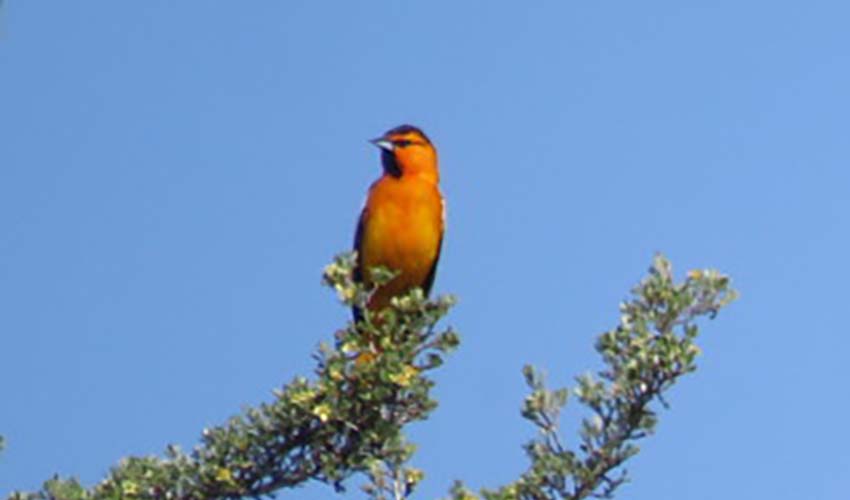
This Bullock’s Oriole was at Wenas Lake.

This Lazuli Bunting was at Wenas Lake. Normally my camera won’t focus on any blue birds, so I was delighted to get this shot that at least is not just a blue blur.
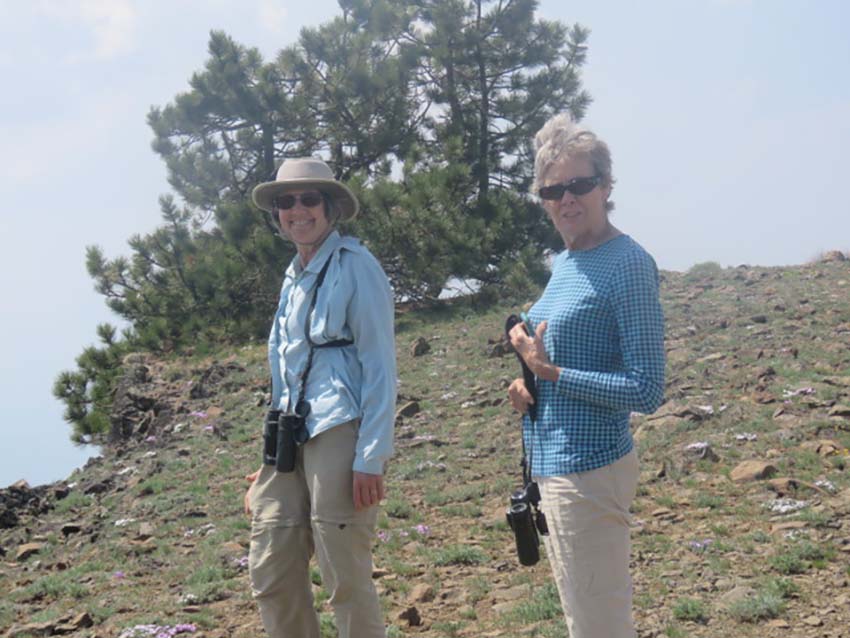
Ellen Stepniewsky and Delia on Mount Clemon. Clemon is clearly some kind of fault-block mountain. We birded up the fairly gentle-sloped side till we got to the top where the land seems to just end and you are looking down almost a cliff to the valley 3000 ft. below on the other side. A Mountain Bluebird whizzed by us with a 30 mph tailwind at the top. Andy Stepniewsky is out of the picture, as am I..
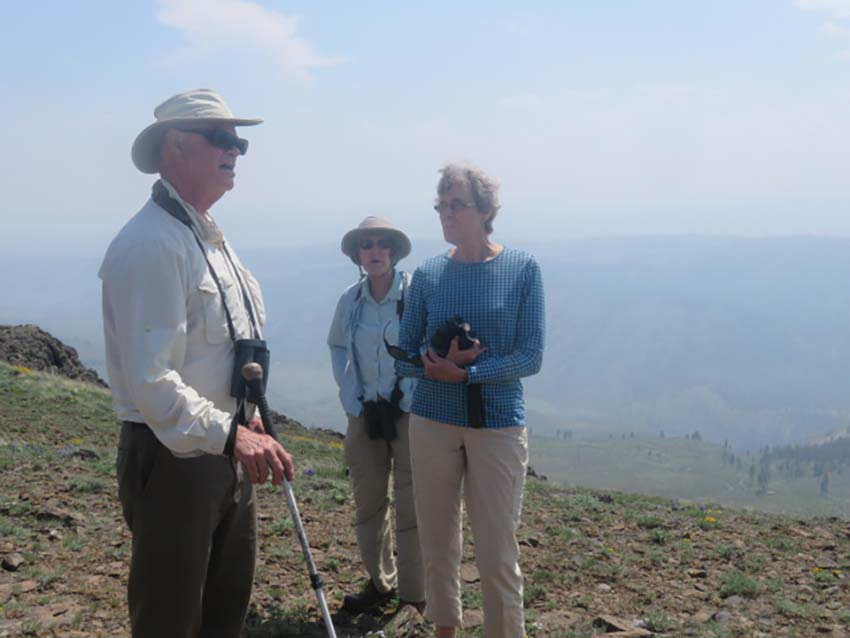
That’s Andy. The haze was from the Alberta fires. Very sad. That left Andy describing all the landmarks we weren’t seeing, like Goat Rocks, Mt. Adam and Mt. Rainier.
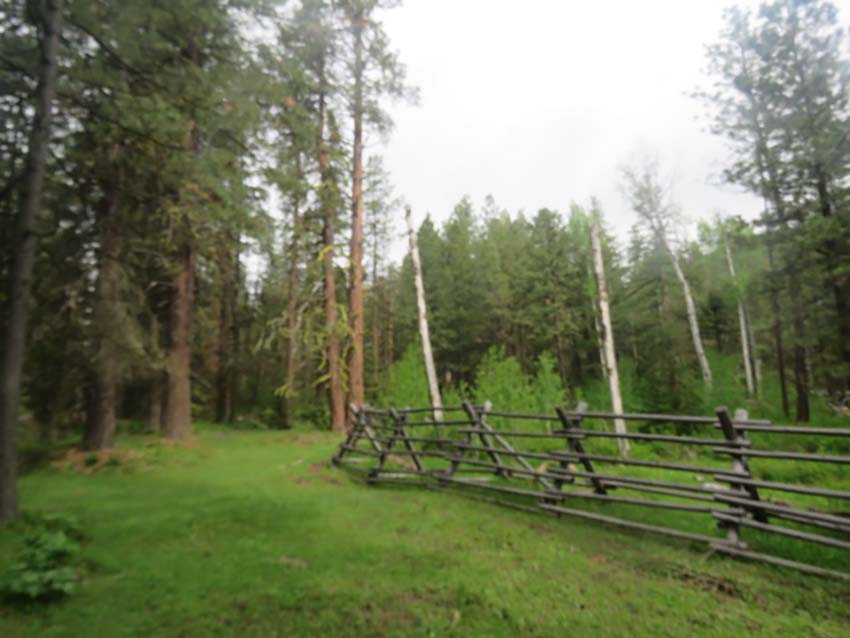
A day later, last Sunday we were up at Bethel Ridge, west of Yakima. Notice the Aspen, which you don’t find on the west side in King County. (as far as I know). The fencing is to keep the Elk out and in many of the exclosures you see an explosion of healthy young Aspen sapling growing, safe from the hungry mouths of Elk.
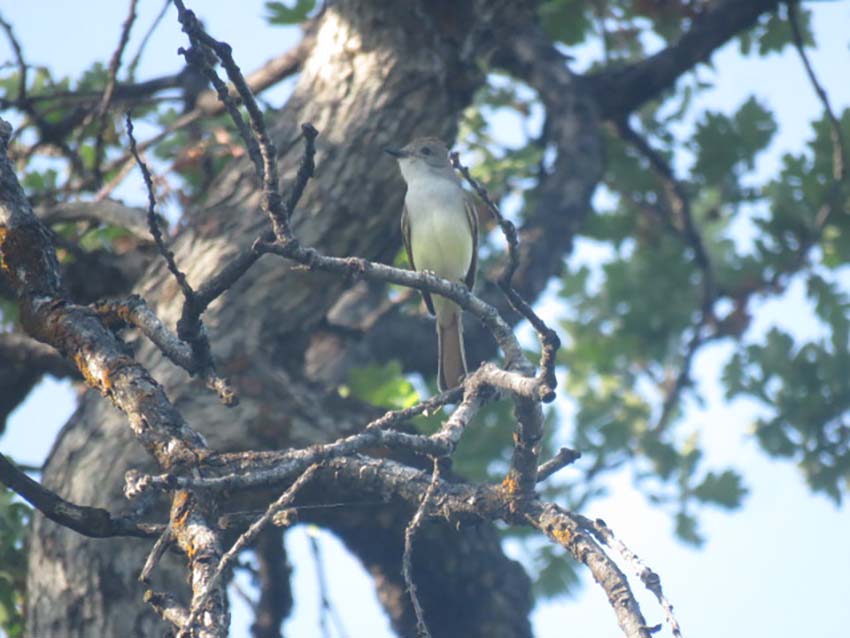
Back at Fort Simco I got a better shot of an Ash-throated Flycatcher than I’ve ever gotten in the Bootheel, where they are quite ubiquitous. This is a member of the Tyrant Flycatcher family.
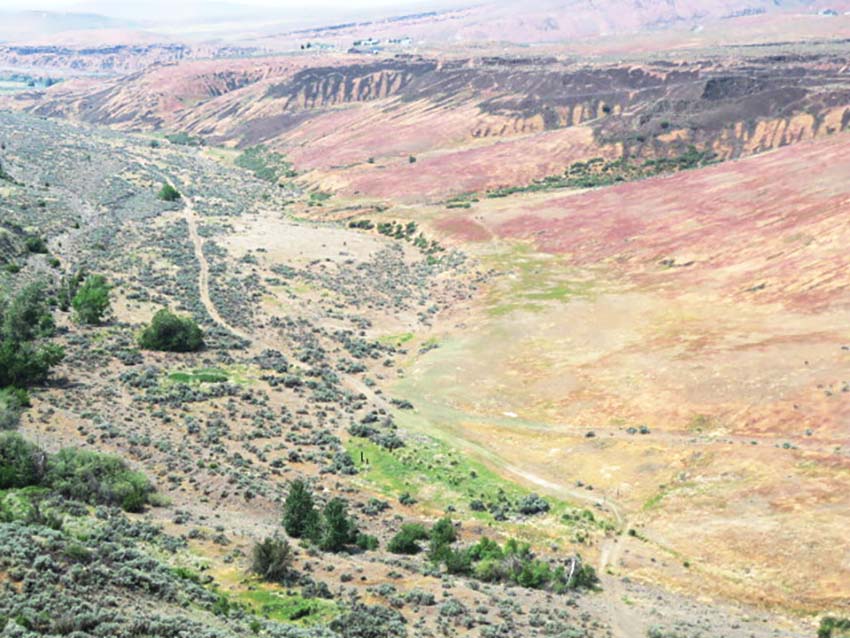
Here’s Selah Creek Canyon, our first stop in Yakima County on the way east. There were many Violet-green Swallows there and the very fast White-throated Swift. I would love to have gotten a good shot of either of these but even a good photographer would need time to do this and we didn’t have that kind of time.
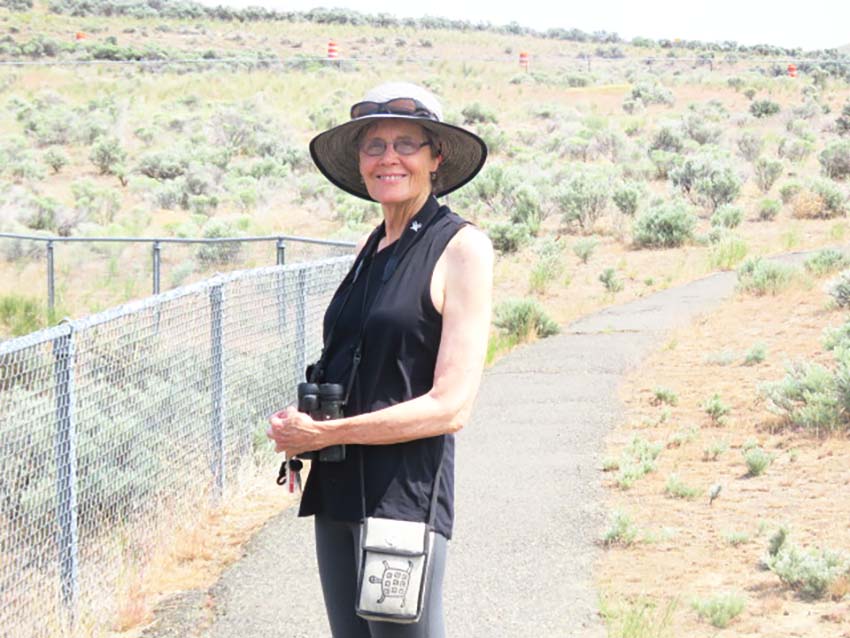
This fence at Selah Creek Canyon rest-stop on Route 82 is very helpful so you don’t fall off he cliff into the canyon. They need one of these on Everest apparently. That’s Delia.

Before all this we went down to Ocean Shores, WA to see another member of the “Tyrant” family, this Scissor-tailed Flycatcher that had been reported far from its normal breeding range in Ocean Shores.. I had seen them in Texas before, never so close. This bird was not afraid of people and was catching insects from a pole right above us, What a great show! Note the pointed wings. Tyrant Flycatchers can fly very acrobatically in order to catch flying insects. This gives them an advantage over some other birds which can be useful in defending a nest. Since the best defense is a good offense, you sometimes see a Tyrant such as a Kingbird go out of its way to attack a passing Crow or other Corvid
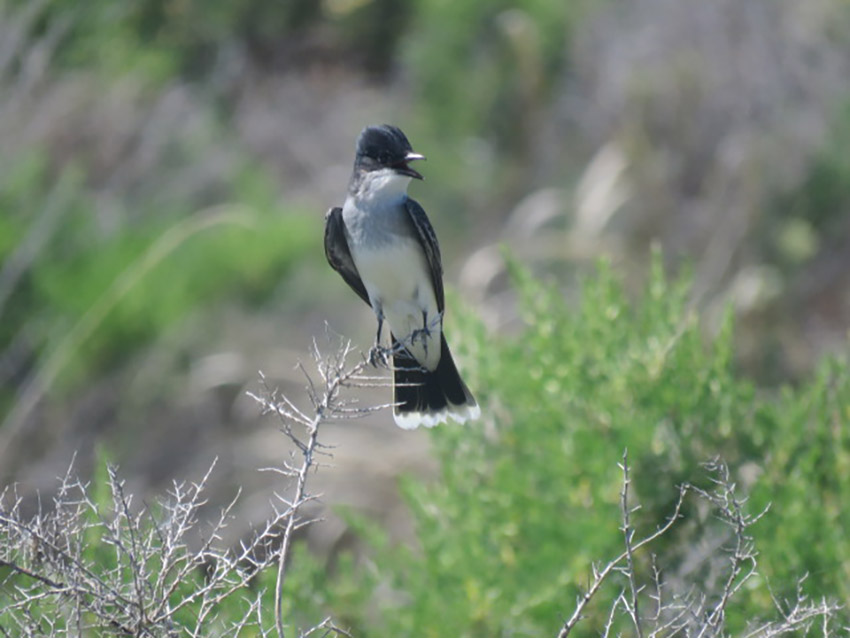
Speak of the Devil… The Eastern Kingbird I believe is the bird that most gave the Tyrant Flycatchers their name. This one was at Toppenish Wildlife Refuge northwest of Yakima. The bright white terminal tail band on this bird is worth a million bucks.

Mt. Baker looked pretty good from Hayton, where we were looking for shorebirds and found Red Knots. I am painting this scene now and happy to have up-to-date reference photos.

This is a scene from right here in Seattle where the Caspian Terns are back. No longer is any big white bird in the sky automatically a Gull. Caspian Terns are superlative in every way, and the World’s largest Terns.
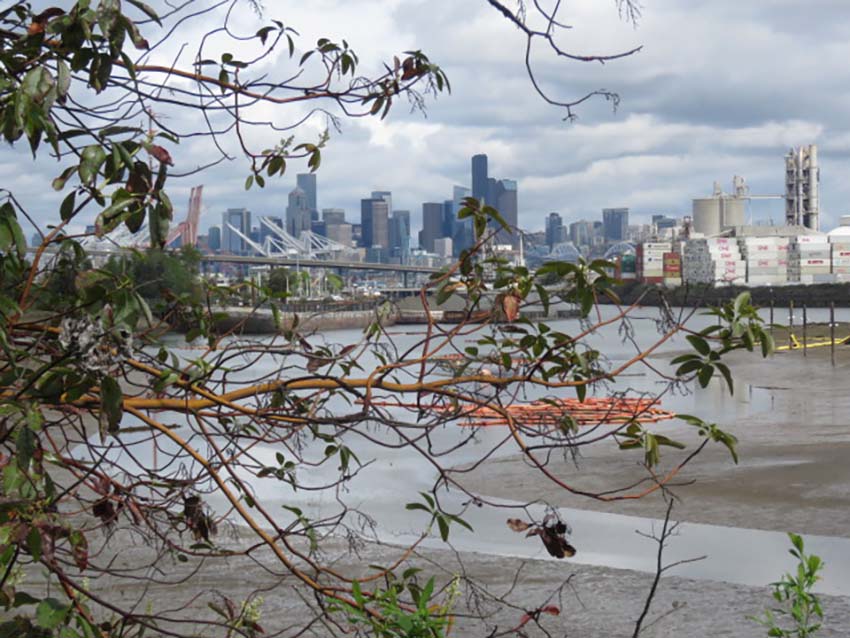
Here’s the site of the Caspian Tern photo on the Duwamish River: Herrings House Park. You don’t see Seattle from this vantage point in publications very often.

Here’s a Great Blue Heron at Herrings House. Doug Wechsler, who has long departed from Seattle but old-timers might remember he located and captured a real live Caimen in Green Lake. I constantly implored him to legally change his name to Caimen Wechsler but he refused. (Maybe that’s why he left Seattle) In any case he took action in 1977 to help designate Foster Island as remnant habitat that should be saved and it is still there.
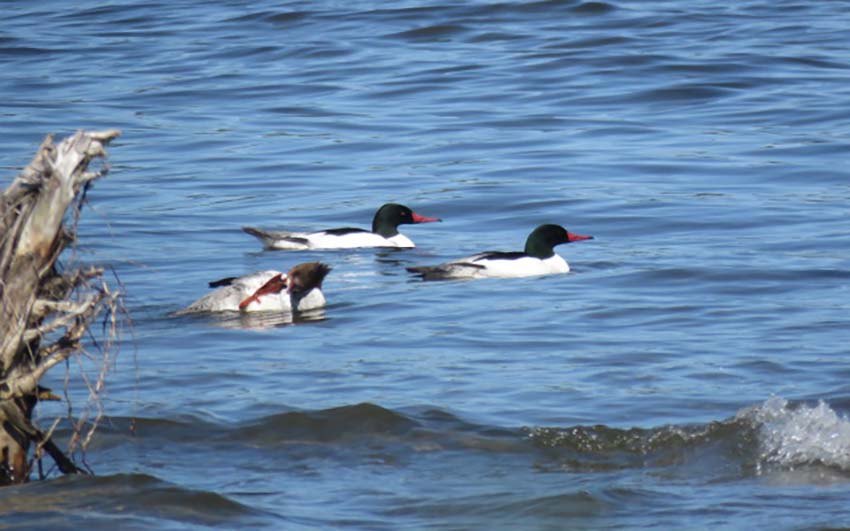
For now I’ll end this blog with a shot of two male and a female Common Mergansers at Three Crabs out by Sequim. We were hoping to have a few other shots from there of some much rarer species but like the Rolling Stones like to say, “You can’t always….”

Sorry, the comment form is closed at this time.